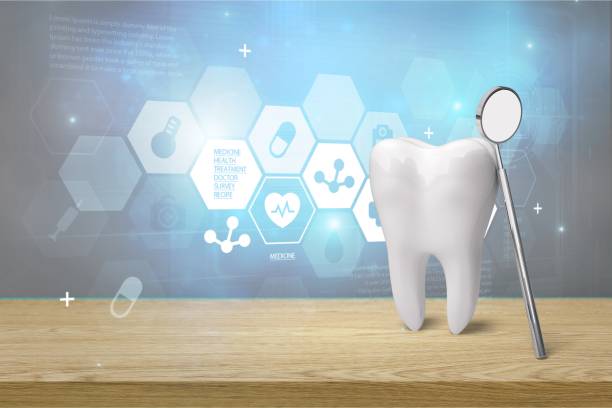Maintaining a healthy smile involves more than just brushing and flossing. Regular dental cleanings are essential for keeping your teeth and gums in top shape.
This guide will teach you all about dental cleaning. It is for both dental hygiene fans and those wanting to improve their oral health. Read on to learn more.
Why Dental Cleaning is Crucial for Oral Health
Regular dental cleanings go beyond the reach of your toothbrush. Professional cleaning removes plaque and tartar that regular brushing can miss.
This helps to prevent gum disease and tooth decay. Cleanings help your dentist spot issues early. This can prevent costly and painful treatments later.
Neglecting regular cleanings can lead to serious dental problems. Plaque that isn’t removed hardens into tartar, which can only be eliminated by a dental professional.
Over time, this buildup can cause inflammation of the gums, known as gingivitis. Left untreated, gingivitis can progress to periodontitis, a severe form of gum disease that can lead to tooth loss. The benefits of deep teeth cleaning helps reduce gum inflammation, ease healing, and improve gum health.
How Often Should You Get a Dental Cleaning?
Most dental professionals recommend getting a dental cleaning every six months. Yet, some may need more frequent cleanings.
This is especially true for those with a history of gum disease or other oral issues. Your dentist can provide personalized recommendations based on your specific needs.
Skipping or delaying cleanings can allow plaque and tartar to build up, increasing your risk of cavities and gum disease. Even if your teeth feel clean, there may be hidden issues that only a professional can detect. Regular visits ensure that any problems are caught early and addressed promptly.
What to Expect During a Dental Cleaning
A dental cleaning typically involves several steps to ensure your teeth and gums are thoroughly cleaned and examined. The process usually starts with a physical exam of your entire mouth. Your dental hygienist will check for signs of gingivitis, cavities, or other concerns.
Next, the hygienist will use special tools to remove plaque and tartar from your teeth. This process, called scaling, targets areas above and below the gumline.
It may be a bit uncomfortable. But, it is vital for preventing gum disease and maintaining good oral hygiene.
After scaling, your teeth will be polished to remove surface stains and make them smooth. This step not only enhances the appearance of your teeth but also makes it harder for plaque to accumulate. Finally, your hygienist will floss your teeth to ensure all debris is removed, leaving your mouth feeling fresh and clean.
The Role of Fluoride in Dental Cleanings
Fluoride treatments are often part of dental cleanings. They are especially for children and those at high risk for cavities. Fluoride is a mineral that strengthens tooth enamel, making it more resistant to decay. During a professional cleaning, your dentist may apply a concentrated fluoride gel or varnish to your teeth.
This treatment can help prevent cavities and reverse early signs of tooth decay. It’s a quick and painless process that provides an added layer of protection for your teeth.
Tap water and toothpaste also contain fluoride. But, a professional application ensures you get the most benefit.
Home Care Tips for Maintaining Clean Teeth
Good oral hygiene at home is crucial for maintaining the results of your dental cleaning. Brushing your teeth twice a day with fluoride toothpaste helps remove plaque and prevent cavities. Use a soft-bristled toothbrush and replace it every three to four months or sooner if the bristles become frayed.
Flossing daily is equally important. It removes food particles and plaque from between your teeth and under the gumline, areas your toothbrush can’t reach. Consider using an interdental brush or water flosser if traditional flossing is challenging for you.
Mouthwash can also be a beneficial addition to your routine. An antimicrobial mouthwash reduces plaque and gingivitis.
A fluoride mouthwash strengthens your enamel. Consult your dentist for recommendations on the best products for your specific needs.
Understanding the Different Types of Dental Cleanings
There are several types of dental cleanings, each tailored to specific needs. The most common type is prophylaxis cleaning.
It is a standard cleaning for those with healthy gums and no major dental issues. This cleaning removes plaque, tartar, and surface stains.
Scaling and root planing, also known as deep cleaning, is recommended for individuals with gum disease. This procedure cleans the tooth roots. This helps prevent infection and promotes healing.
The Importance of Regular Dental Checkups
While dental cleanings are essential, they are just one component of comprehensive oral care. Regular checkups let your dentist check your oral health.
They can find issues and provide preventive treatments. These visits are an opportunity to discuss any concerns or changes in your dental health.
During a checkup, your dentist will perform a thorough examination of your teeth, gums, and mouth. This may include X-rays to detect problems that aren’t visible to the naked eye, such as cavities between teeth or bone loss. Finding issues like cavities, gum disease, or oral cancer early can greatly improve treatment outcomes.
Regular checkups ensure your oral health is monitored and maintained. It’s a proactive approach that can save you time, money, and discomfort in the long run.
How Your Diet Affects Dental Health
Your diet plays a significant role in maintaining healthy teeth and gums. A balanced diet, rich in fruits, veggies, whole grains, lean proteins, and dairy, gives your body the nutrients it needs.
It helps maintain strong teeth and fight infections. Foods high in calcium and vitamin D are particularly beneficial for bone and tooth health.
Limiting sugary and acidic foods and beverages can help prevent tooth decay. Sugars feed the bacteria in your mouth, producing acids that erode tooth enamel. Acidic foods and drinks, such as citrus fruits and sodas, can also weaken enamel over time.
Drinking plenty of water is also essential. Water helps wash away food particles and bacteria, reducing the risk of cavities and gum disease. If you indulge in sweets or acidic treats, rinse your mouth with water afterward to help protect your teeth.
The Connection Between Oral Health and Health
Oral health is closely linked to your overall health and well-being. Poor oral hygiene can lead to gum disease, which has been associated with various systemic conditions, including:
- heart disease
- diabetes
- respiratory infections
Gum disease can cause chronic inflammation. It can harm other body parts. So, it’s important to maintain good oral health.
Pregnant women with gum disease are at a higher risk of complications such as preterm birth and low birth weight. Keeping your gums healthy is especially crucial during pregnancy to protect both your health and your baby’s health.
Regular dental cleanings and checkups can prevent these issues. They maintain your oral health and catch problems early. By taking care of your teeth and gums, you’re also contributing to your health and quality of life.
Common Myths About Dental Cleaning Debunked
There are several myths about dental cleanings that can lead to misconceptions and reluctance to seek professional care. One common myth is that dental cleanings are painful.
In reality, cleanings are generally painless. This is especially true when a skilled hygienist does them. Any discomfort is usually minimal and temporary.
Another myth is that if you brush and floss regularly, you don’t need professional cleanings. While good oral hygiene is essential, it can’t replace the thorough cleaning and examination provided by a dental professional. Regular cleanings help remove tartar and plaque buildup that home care alone can’t address.
How to Find the Right Dentist for Your Cleanings
Choosing the right dentist is crucial for ensuring comfortable, effective dental cleanings. Start by asking for recommendations from friends, family, or colleagues. Reading online reviews and testimonials can also provide insights into a dentist’s reputation and patient satisfaction.
Consider the dentist’s qualifications and experience. Look for a dentist who is licensed, has good standing with their professional association, and has experience in providing the type of care you need. Visiting the dental office and meeting the staff can also help you gauge the environment and comfort level.
Ask questions about the dentist’s approach to care. Inquire about their methods for ensuring patient comfort and their views on preventive care. Finding a dentist you trust and feel comfortable with can make a significant difference in your oral health experience.
Making Dental Cleanings a Priority in Your Busy Schedule
In today’s fast-paced world, it can be challenging to prioritize dental cleanings amidst a busy schedule. However, making time for your oral health is essential for long-term well-being. Schedule your cleanings well in advance and mark them on your calendar to avoid conflicts.
If you have a busy work or school schedule, look for dental offices that offer extended hours or weekend appointments. Communicate your scheduling needs with your dental office, they often have flexibility to accommodate your availability.
Oral health solutions can save you from costly, time-consuming treatments later. Focus on your health by making dental appointments a non-negotiable part of your routine.
Understanding Dental Cleaning
Maintaining a healthy smile requires more than just daily brushing and flossing. Regular dental cleaning is a vital part of oral health care, offering benefits that extend beyond the mouth. By understanding the importance of cleanings, what to expect during appointments, and how to maintain your oral health at home, you can enjoy a lifetime of healthy, beautiful smiles.
For more helpful tips, check out the rest of our site today.




